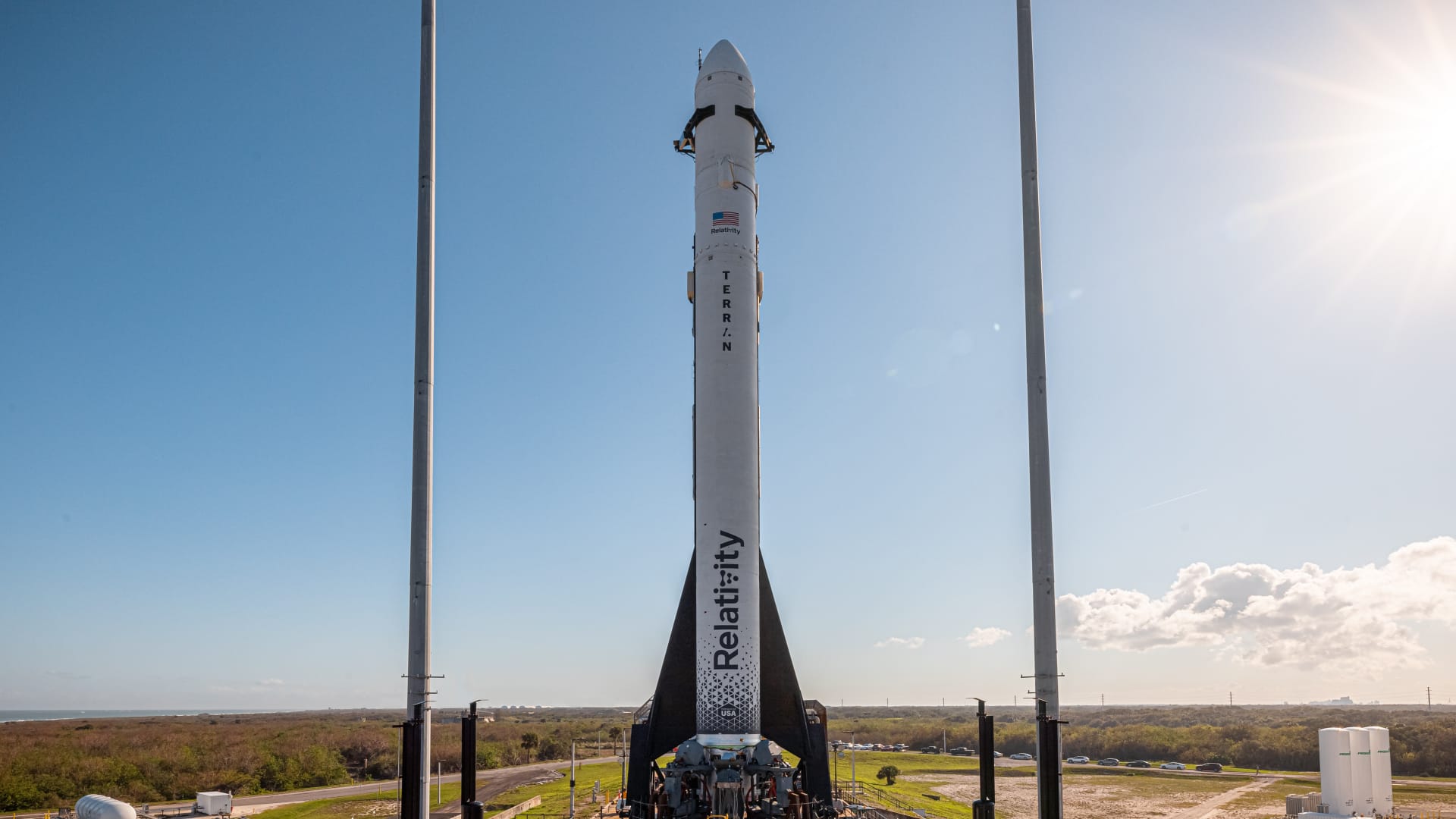
3D-printing specialist Relativity Space is attempting its first rocket launch on Saturday, a mission that marks the most significant test yet of the company’s ambitious manufacturing approach.
The company’s Terran 1 rocket is launching from LC-16, a launchpad at the U.S. Space Force’s facility in Cape Canaveral, Florida.
The mission is called “Good Luck, Have Fun,” and aims to successfully reach orbit. Relativity has a window between 1 p.m. and 4 p.m. ET to launch, or postpone as it did after an attempt earlier this week. The company said that a ground equipment valve malfunctioned during Wednesday’s attempt, which affected the temperature of the propellant that was being pumped into the rocket, but has since fixed the valve issue.
While many space companies utilize 3D printing, also known as additive manufacturing, Relativity has effectively gone all-in on the approach. The company believes its approach will make building orbital-class rockets much faster than traditional methods, requiring thousands less parts and enabling changes to be made via software. The Long Beach, California-based venture aims to create rockets from raw materials in as little as 60 days.
Terran 1 stands 110 feet high, with nine engines powering the lower first stage, and one engine powering the upper second stage. Its Aeon engines are 3D-printed, with the rocket using liquid oxygen and liquid natural gas as its two fuel types. The company says that 85% of this first Terran 1 rocket was 3D-printed.
The company’s Terran 1 rocket stands on its launchpad at LC-16 in Cape Canaveral, Florida ahead of the inaugural launch attempt.
Trevor Mahlmann / Relativity Space
Relativity prices Terran 1 at $12 million per launch. It’s designed to carry about 1,250 kilograms to low Earth orbit. That puts Terran 1 in the “medium lift” section of the U.S. launch market, between Rocket Lab’s Electron and SpaceX’s Falcon 9 in both price and capability.
Wednesday’s debut for Terran 1 is not carrying a payload or satellite inside the rocket. The company emphasized the launch represents a prototype.
In a series of tweets before the mission, Ellis shared his expectations for the mission: He noted that reaching a milestone of maximum aerodynamic pressure about 80 seconds after liftoff would be a “key inflection” point for proving the company’s technology.
The exterior of “The Wormhole” factory.
Relativity Space
